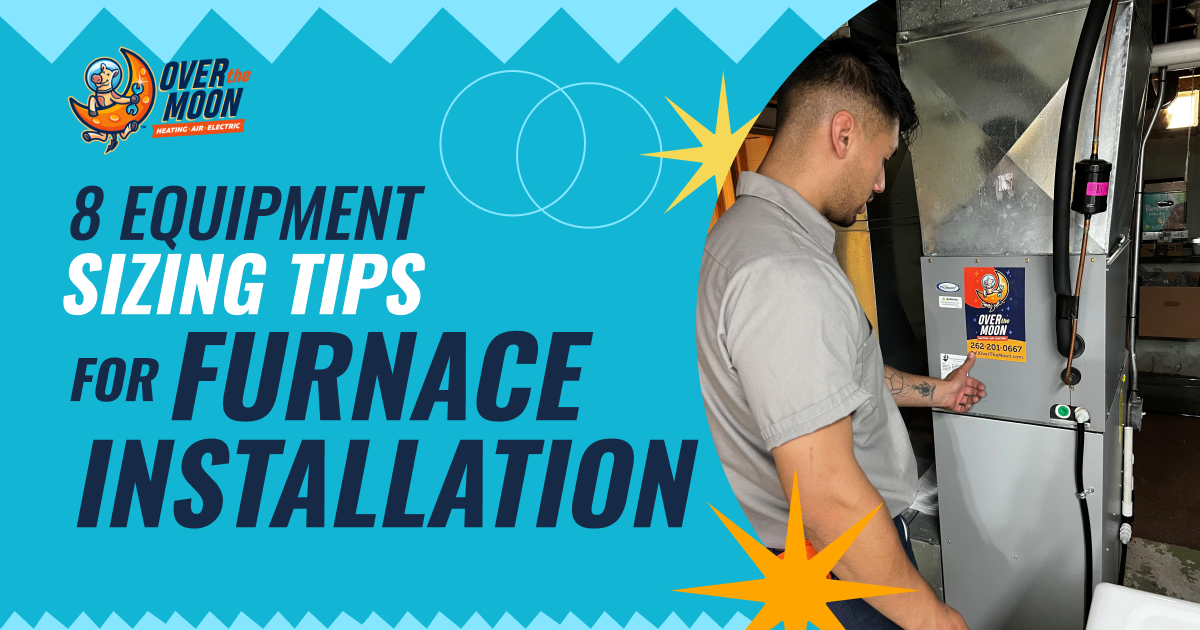Sizing is among the most important parts of the furnace installation process. If it’s the right capacity, the unit will ensure your family is warm and comfortable no matter how cold the weather gets. A properly sized furnace also runs more smoothly, potentially avoiding costly repairs, and operates more efficiently, saving on your energy bills. Generally, furnace installers will consider the following to select the best-suited model for your home:
1. Determine the Type of Furnace You Need
Before you can size a furnace, you must determine the type to install. Each type varies in efficiency and the fuel source used. The choices include gas furnaces, which use natural gas or propane, and electric furnaces, which require no gas or ventilation but are less efficient. Oil furnaces are more often used in rural areas but require an oil tank and ventilation system. Heat pumps are electric and transfer heat instead of generating it (in colder areas, a backup heater is often necessary).
2. Know Your Home’s Square Footage
Determining the number of British Thermal Units (BTUs) a furnace should have first requires knowing your home’s square footage. Generally, BTU requirements increase with home size, but factors such as climate can influence how much heat energy is needed. Depending on the climate where you live, consider 30 to 60 BTUs per square foot of space.
In a 1,200-square-foot home, considering size alone means you’ll need 35,000 to 75,000 BTUs. A 2,100-square-foot house requires a 65,000 to 125,000 BTU furnace, while a 2,400-square-foot home needs a 70,000 to 145,000 BTU unit. A BTU measures the energy a furnace uses to heat your home, so it helps effectively compare models and their sizes.
3. Count the Floors Your Home Has
A one-level home may not require as large a furnace as a multi-level property. The square footage of each floor is also a factor. But if your home has several floors, sizing a furnace generally results in choosing a higher-capacity system to meet your heating needs.
4. Consider Your Climate
The colder the climate you live in, the more BTUs per square foot your furnace will need to maintain a comfortable temperature indoors. Homes in warmer climate zones don’t need as much heating power. The U.S. is divided into several climate zones; the warmest zones are southern locations known for their heat and the coldest zones are located up north and in mountain areas. Since Wisconsin is in the Northern U.S. and sees very cold winters and cool temperatures for much of the year, homes here generally require a furnace with a high heating capacity.
5. Choose an Efficiency Rating
Furnaces have an annual fuel utilization efficiency (AFUE) rating. For a standard or mid-efficiency unit, the AFUE rating is about 80%, but high-efficiency furnaces can be rated 90% AFUE or higher. A furnace’s efficiency rating is important to know for equipment sizing as it describes how well the furnace outputs heated air. High efficiency is achieved by selecting the right BTU rating for your home’s size (the larger your home, the more BTUs are needed to produce energy-efficient heating).
6. Determine the Quality of Insulation
A home’s insulation affects how well a furnace can heat it. Poor insulation equals inefficient heating and the furnace will run longer due to heat being lost through walls and the attic. An HVAC contractor should check your home’s insulation before furnace installation. By first improving your home’s insulation or adding more of it, they can more accurately size a furnace to save on energy usage and bills.
7. Measure Your Windows
Aside from measuring the size of the windows in your home, note the types you have and how many there are. Smaller windows tend to contribute to improved energy efficiency, while double-pane windows are effective at keeping heated air in. The number of windows also affects furnace efficiency; for example, the more windows your home has, the more BTUs that will be required to heat it.
8. Consult a Professional
Correctly sizing a furnace requires more than adding up your home’s square footage, noting how cold it is outside, and counting windows. An HVAC professional has ways to calculate the correct furnace size for your home. Using their training and experience, they can perform a Manual J load calculation. It includes a formula that considers a range of factors so your local furnace installer can size heating equipment with precise accuracy.
Call Over the Moon for Furnace Installation
When you need a new furnace installed, our technicians ensure the unit is the proper type and size for your home. They are trained in the latest, most effective equipment sizing methods. Our team can also help you choose from energy-efficient alternatives to your existing system. For expert help with equipment sizing and installation from qualified furnace installers in Brookfield, WI, call (262) 218-2860 today.

